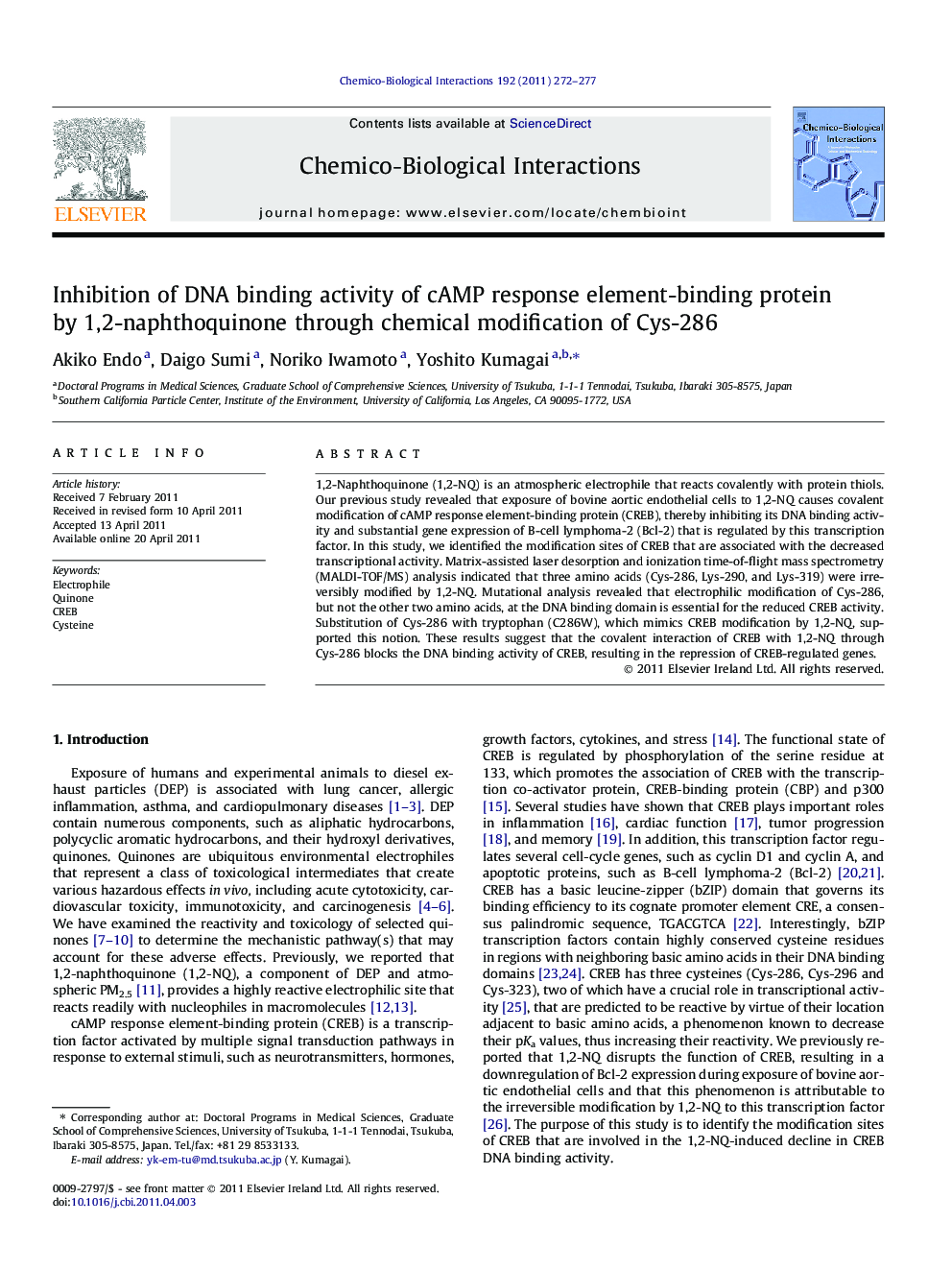| Article ID | Journal | Published Year | Pages | File Type |
|---|---|---|---|---|
| 2580897 | Chemico-Biological Interactions | 2011 | 6 Pages |
Abstract
1,2-Naphthoquinone (1,2-NQ) is an atmospheric electrophile that reacts covalently with protein thiols. Our previous study revealed that exposure of bovine aortic endothelial cells to 1,2-NQ causes covalent modification of cAMP response element-binding protein (CREB), thereby inhibiting its DNA binding activity and substantial gene expression of B-cell lymphoma-2 (Bcl-2) that is regulated by this transcription factor. In this study, we identified the modification sites of CREB that are associated with the decreased transcriptional activity. Matrix-assisted laser desorption and ionization time-of-flight mass spectrometry (MALDI-TOF/MS) analysis indicated that three amino acids (Cys-286, Lys-290, and Lys-319) were irreversibly modified by 1,2-NQ. Mutational analysis revealed that electrophilic modification of Cys-286, but not the other two amino acids, at the DNA binding domain is essential for the reduced CREB activity. Substitution of Cys-286 with tryptophan (C286W), which mimics CREB modification by 1,2-NQ, supported this notion. These results suggest that the covalent interaction of CREB with 1,2-NQ through Cys-286 blocks the DNA binding activity of CREB, resulting in the repression of CREB-regulated genes.
Keywords
Related Topics
Life Sciences
Environmental Science
Health, Toxicology and Mutagenesis
Authors
Akiko Endo, Daigo Sumi, Noriko Iwamoto, Yoshito Kumagai,
